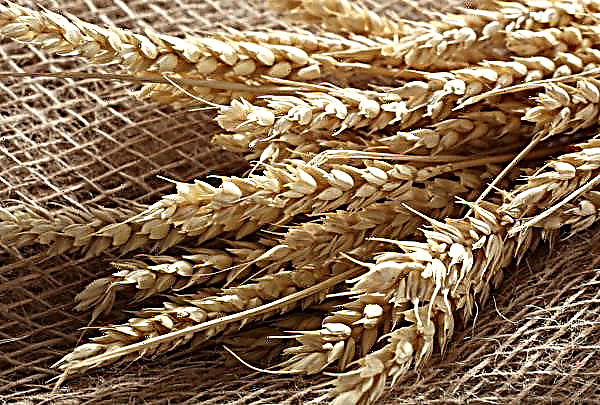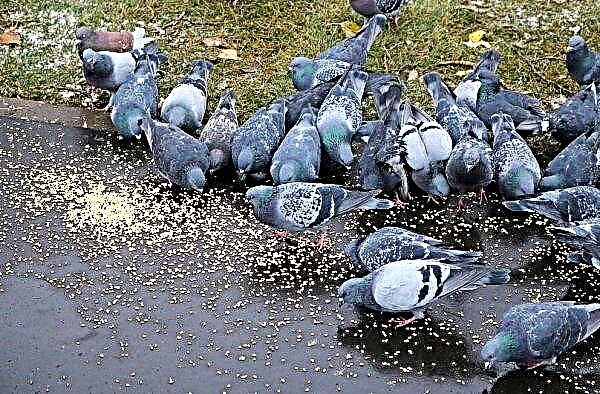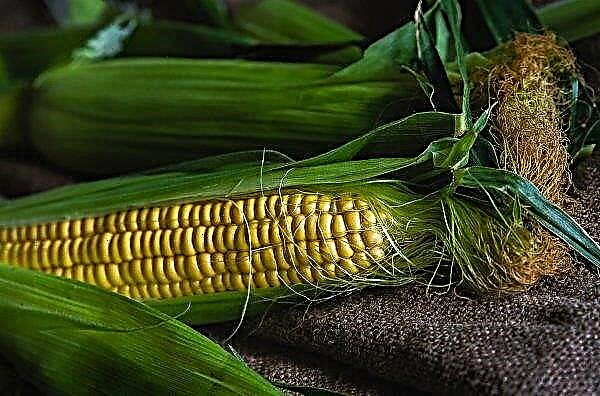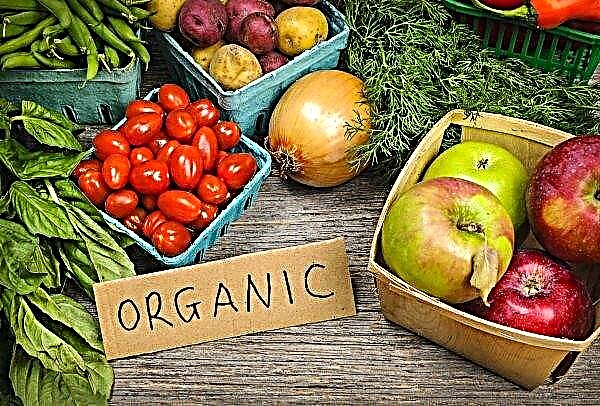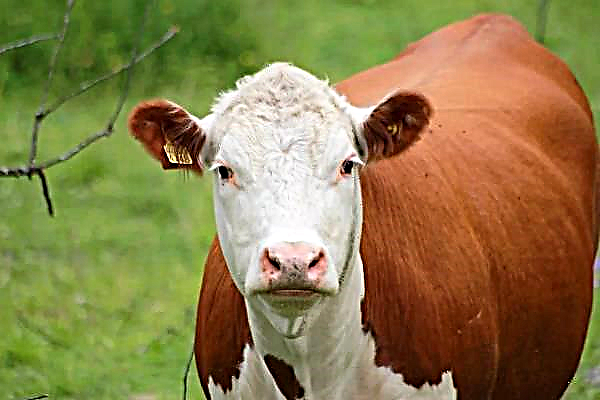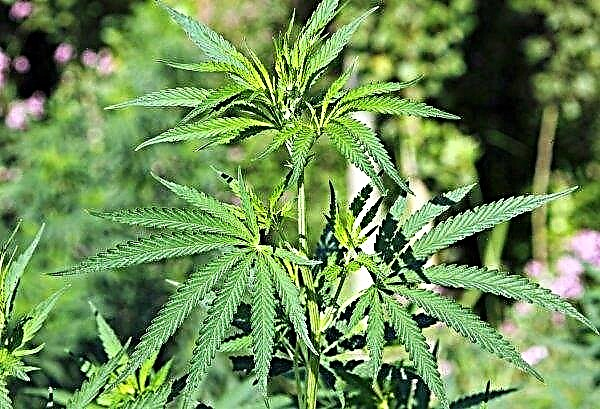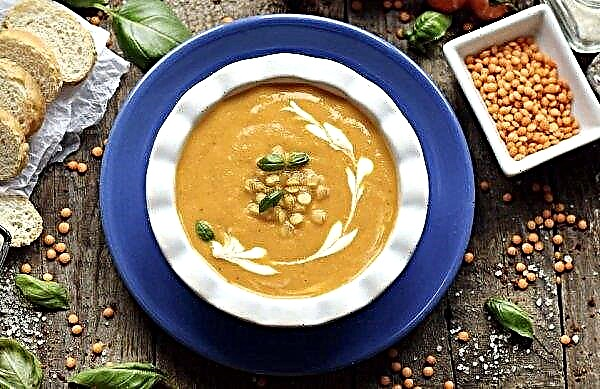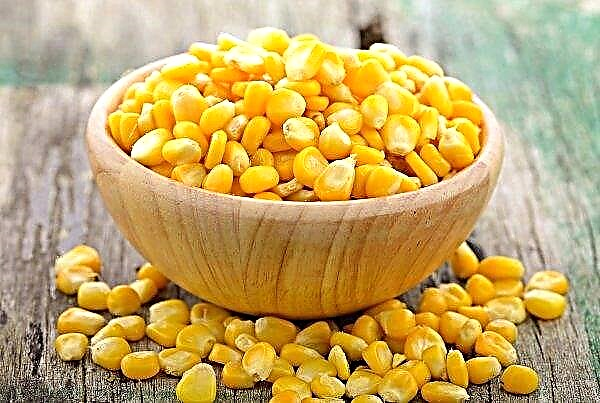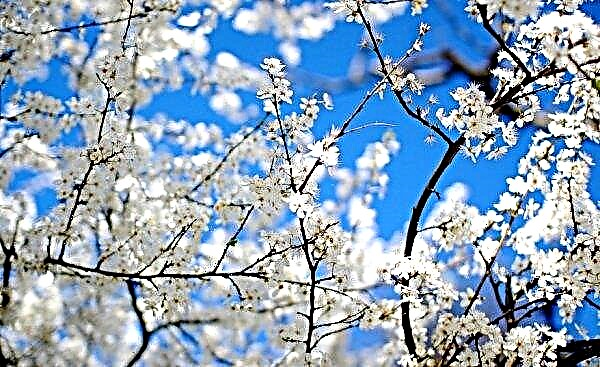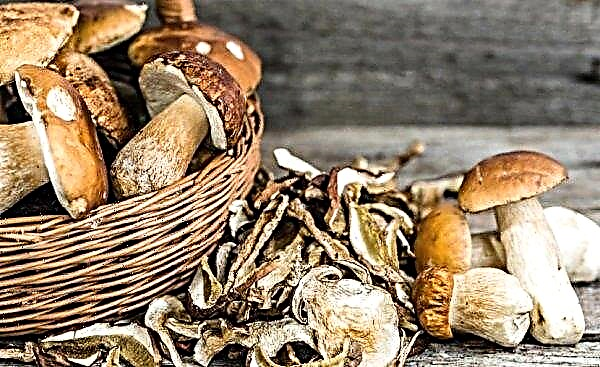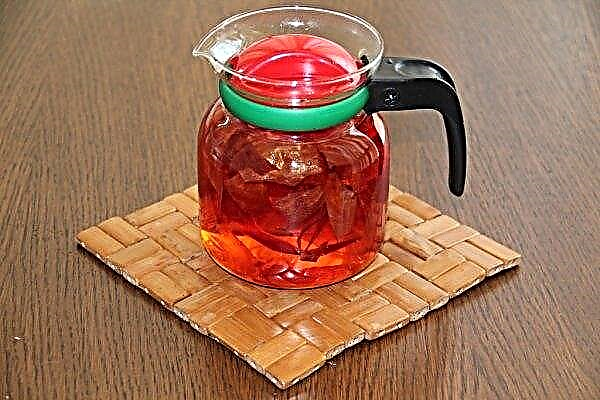Potato is one of the most common vegetables that can be found in our dishes. That is why almost always a special place is allocated to potatoes in areas and vegetable gardens. There are many different varieties and hybrids, and today in this article we will consider Leader potatoes, the high characteristics of which are appreciated by many vegetable growers.
Description and characteristics of the variety
Potato Leader was obtained thanks to the fruitful activities of the employees of the GNU of the Ural Scientific Research Institute of Agriculture and in the early 2000s was included in the State Register of Russia. The variety is early ripening and has a lot of advantages, among which the high taste characteristics and productivity, suitability for transportation and a long storage period are especially appreciated.
Did you know? During the gold rush in Alaska, potatoes that saved from scurvy were worth more than gold.
Plants and fruit
The Leader's tuber has an oval or oval-round shape, the mass of which can reach 100-120 g. The skin color is yellow, the flesh is white. Eyes are small and shallow, which is very appreciated when cleaning. One bush contains about 7-10 tubers.
Due to its high taste characteristics, the Leader is suitable for any dishes - in fried, boiled, baked and other types. The tops of this variety are quite tall and developed - up to 1 m in height. Dark green leaves are small in size and have some wavy edges. The color of the whisk is white.
Ripening time
The leader is an early ripening variety. The full ripening period of this potato takes 60–70 days, and the first digging is available already 45 days after the seedlings are biting.
Early potato varieties also include:
Productivity
The Leader variety has a fairly high yield, which is about 207–250 kg / ha. At the same time, the maximum registered indicator reached 340 c / ha. Depending on the stages of the growing season, the level of productivity also changes somewhat:
- at the time of the first digging (45th day) - 98–115 kg / ha;
- in the second digging (day 55) - 135–188 kg / ha.
 The variety exhibits high protection against cancer pathogens, but is easily exposed to late blight, affecting both tubers and potato tops
The variety exhibits high protection against cancer pathogens, but is easily exposed to late blight, affecting both tubers and potato tops
Pros and cons of the Leader variety
Like all varieties, Leader potatoes have both advantages and disadvantages.
- Among the main advantages of this variety are:
- high taste;
- wide range of use;
- high level of productivity, regardless of weather conditions;
- stable immunity to various diseases;
- high transportability and durability.
- Varieties have few drawbacks, and among the main ones they are indicated:
- the vulnerability of the variety to pest invasion;
- low drought tolerance;
- high need for hilling.
Growing Features
Knowing all the features of growing potatoes and adhering to the basic rules for choosing a place and planting procedures for this vegetable are decisive factors in obtaining a rich and high-quality crop.
Growing conditions
The general process of growing potatoes is based on several basic conditions:
- Temperature mode. Despite the fact that potatoes are grown in different regions, the climatic conditions of which differ from each other, the most optimal growth conditions for this vegetable are cool summers. It should be noted that the most powerful effect on growing potatoes during the absence of seedlings is the temperature of the air at night, and after - daytime. According to studies by potato growers, a suitable soil temperature at which there is an active growth and development of tubers of early ripening varieties, such as Leader, is +11 ... + 15 ° С for the northern regions and +15 ... + 17 ° С for the southern . Elevated temperatures (from + 25 ° C) adversely affect the development of tubers, and in special cases (+ 30 ° C and above) cause the plant to stop growing. Low temperatures also act as unfavorable conditions - the tops are damaged at –1.5 ...– 2 ° С, and the tubers themselves at –2 ...– 3 ° С.
- Soil moisture. The stages of the formation of sprouts and the first formation of tops almost no need for moisture. During this period, the plant also easily tolerates elevated air temperatures. An increase in soil moisture becomes necessary during the flowering period and up to the end of the tops growth - at this stage, insufficient moisture can lead to wilting of leaves and a malfunction in the starch accumulation processes in the vegetable. A period of prolonged drought causes a decrease in the number of crops and a deterioration in the taste characteristics of potatoes. However, it should be taken into account that excessive watering also negatively affects the general condition of the plant and leads to oxygen starvation (the main sign of oxygen deficiency is the growth of white lentils over the entire surface of the potato).
- Lighting. The consequences of the lack of this factor are elongated stems, yellowed tops and a delay in the formation of tubers. Lighting is useful for digging up seed potatoes - having been in the light, it acquires a green hue, which indicates the formation of chlorophyll. Such planting material is protected from damage by various viral diseases and attacks of rodents during storage. You need to know that ware potatoes should be stored in dark rooms, because after gardening, solanine is formed in it, which has toxic properties and makes the vegetable unsuitable for consumption.
- The soil. Growing potatoes requires loose, loose and not salty soil, in which tubers develop well and do not deform. The best option would be sandy and loamy chernozems. In bad soil, potatoes will also grow, but this will adversely affect the final crop.
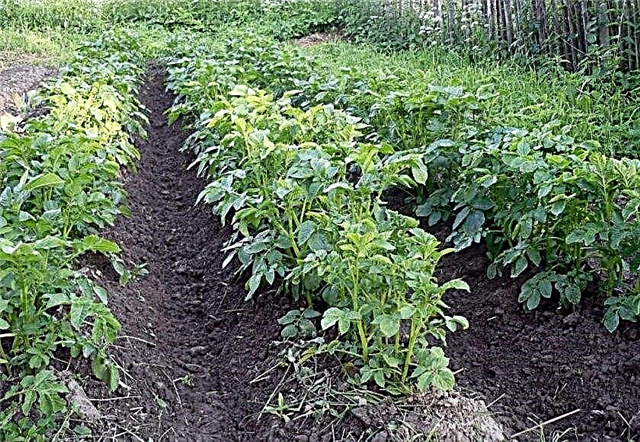 The selection of small tubers for planting leads to a low yield and extinction of the variety
The selection of small tubers for planting leads to a low yield and extinction of the varietyLanding time
There is an established tradition of planting potatoes in the first half of May, but such dates are not always true. Since potatoes are heat-loving crops, it requires planting in already sufficiently warmed soil - rush can lead to loss or death of the crop. Another important factor is soil moisture: high rates can cause the formation of rotten diseases.
It is not difficult to independently determine the optimal time for planting potatoes. To do this, you should wait until spring frosts pass, and the earth warms up to at least + 8 ° C to a depth of 10-12 cm. In predicting the planting period, one can analyze weather forecasts from several sources for the estimated potato planting period or use folk signs: about 7-10 days elapse between flowering bird cherry and the appearance of foliage on a birch. This period is considered the most suitable.
Important! Many gardeners take into account the lunar calendar when planting, however, the scientific fact of the influence of the moon on the growth of planted plants is not scientifically confirmed.
Selection and preparation of a landing site
When choosing a site, it should be noted that the place for planting potatoes should be flat, open and not shaded - This culture requires adequate natural light. The soil should have an arable layer and have a high humus content. As a prevention of various diseases, it is recommended to use crop rotation. Legumes and winter crops are considered the best precursors for potatoes, but in general, you can plant any vegetables except solanaceous (tomatoes, peppers, eggplant and others). The use of crop rotation leads to the restoration of nutrients in the soil, as well as its purification from various pests and pathogens.

Soil intended for planting is prepared in the autumn - plowed (to a depth of 25-30 cm), cleaned of weed grass and fertilized with complex organic and mineral fertilizers. With the onset of spring, fertilizing is again applied to the soil, but nitrogen fertilizers.

Technology and landing pattern
Depending on the region and climatic features, there are many different technologies for planting potatoes. The most popular among them are:
- Landing in the crests - Suitable for regions with regular and heavy rains. When using this scheme, the tubers will be located above ground level, which allows water to drain in the aisle without harming the potatoes. This technology is well suited for planting in clay soils, but needs frequent watering with sandy and sandy loamy soil.
- Landing in the trench - the method is preferable for arid regions and consists of the preparation of special trenches where organics (manure, compost, ash or hay) are previously laid. This method of planting ensures constant maintenance of the desired moisture level and the absence of the need for additional bait. However, landing in trenches is a rather time-consuming process, and there is a danger of rotting in the event of prolonged rains.
- Planting with double beds - Following this technology, potatoes are planted in holes that are staggered. This method provides more space for the development of the root system of the plant and sufficient lighting for the tops, which positively affects the quantity and quality of the future crop.
- Mittlider Landing - supports the most optimal conditions for the growth and development of potatoes and, despite the need for labor during the first formation of beds, subsequently significantly saves time and effort on weeding weed grass.

Despite the variety of different methods, the most popular way of planting potatoes among gardeners remains the technology of planting potatoes in rows, under a shovel:
- after digging and fertilizing the soil, the edges of future beds are marked with stakes;
- dig holes at a distance of about 25-30 cm from each other and a depth of 7-10 cm - in the conditions of sandy loamy soils, and 5-7 cm - for loamy soils;
- fertilizer and planting material are placed in each well. At the same time, they ensure that fragile sprouts do not break;
- the hole is sprinkled with earth.
The distance between rows is 70 cm, but can be reduced for early varieties provided there is not enough space on the site.
Important! Reducing the distance between the rows, it should be borne in mind that in the process of growth, the potatoes will need hilling, the soil for which is taken from the row-spacing. EIf they are too narrow, the root system may suffer.
Care Features
The potato belongs to unpretentious crops that do not require special care, but are very responsive to minimal care, which immediately affects the quality and quantity of the crop. Adhering to simple recommendations, you can guaranteedly get a large number of high-quality tubers.
Watering
The frequency and volume of potato irrigation may vary slightly depending on the soil and climatic conditions of the region. Heavy and dense soil retains high humidity for a long time, and therefore needs less watering. In dry and hot weather, the amount of watering increases to 5-6 times a month, and at cool temperatures it decreases to 3-4 times. The volume of water also varies from 5 to 12 liters for one bush.
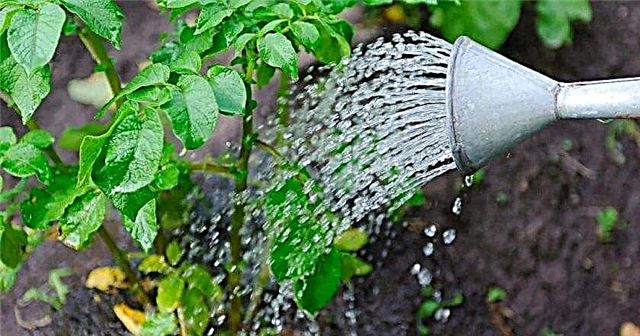 The optimal time for watering is considered to be evening time.
The optimal time for watering is considered to be evening time.
When starting watering, you should take into account some of its features:
- taking into account the fine structure of potato suction roots, the water for irrigation should not be cold - it is better to warm it up in the sun during the day;
- the first watering is introduced no earlier than the first shoots appear, the height of which will reach 10 cm;
- during the budding period, the frequency of watering is increased to 3 times a week, pouring 5 liters under one plant.
Important! At elevated air temperatures, it is recommended to loosen and mulch the soil, which will help maintain the necessary soil moisture.
Fertilizer application
Over the entire period of the potato growing season, at least three top dressings will be required at different times:
- First feeding - carried out 10-14 days after planting potatoes. Mullein is used as fertilizer (0.5 kg of manure is bred in 10 liters of water) or chicken droppings (1 tablespoon of fertilizer is bred in 10 liters of water). Moreover, to obtain the required amount of nitrogen, 0.5 l of fertilizing is poured under each bush.
- Second feeding carried out during the period of formation and extension of tubers. At this stage of development, mineral and complex fertilizers with a high content of potassium and phosphorus are introduced.
- Third feeding introduced 3-4 weeks before the expected harvest date - this helps to enrich the tubers with the necessary nutrients and vitamins, which will increase the potato shelf life. 1/4 L of manure, 20-30 g of superphosphate dissolved in 10 L of water are used as top dressing.
 When fertilizing, it is better not to use fresh manure. It can become the causative agent of many potato diseases.
When fertilizing, it is better not to use fresh manure. It can become the causative agent of many potato diseases.
Weeding and weed removal
The process of weeding and removing weeds is an integral part of care procedures. Even before the first seedlings appear, the earth must be systematically cleaned of weeds - this will provide an opportunity not only retain all the nutrients in the soil, but also get more oxygen to the roots.
In the future, after each watering, it is recommended to systematically weed the aisles, removing weed grass and preventing the formation of crust on the ground.
Protection against diseases and pests
On some types of soil and with irregular and shallow loosening, stagnation of water may form in the soil, which is the root cause of the formation of diseases such as tubers late blight, asphyxiation and rot. If there is one or several diseases before the flowering period, potatoes are treated with biostimulants or growth regulators, which not only positively affects the yield, but also significantly reduces the level of disease damage. At the budding stage, a 0.2% solution of metal complexonates can be used.

As a preventive measure, the following measures are recommended:
- fertilizing with fertilizers with increased potassium and phosphorus;
- carrying out high hilling during the closure of the tops;
- at the beginning of budding or during the closure of the tops, treatment of plants with contact fungicides;
- in case of scab - top dressing potatoes with manganese sulfate or ammonium.
The most popular potato pest is Colorado beetle. At the first detection of this insect on the tops, it is recommended to carry out manual collection and destruction of both the beetles themselves, and the larvae, egg-laying. In the case of a small number of pests, the use of environmentally friendly preparations is possible (infusions of wormwood, walnut leaves, a decoction of dandelions, etc.). Calendula and legumes, which are planted in aisles or along the perimeter of the plot, also have a deterrent effect.
Given the development of larvae up to 2–3 years of age, manual collection will not be able to have the desired effect, and at this stage, treatment of plants with insecticides should begin.Did you know? Potatoes can be classified as poisonous plants, as it is enough to eat to poison a person 2-3 of its berries.
General prevention, which must be carried out when growing potatoes, consists of several basic rules:
- choose only potato varieties resistant to common diseases of a particular region;
- observe crop rotation;
- avoid placing nearby different vegetables of the Solanaceae family that are affected by the same diseases;
- plant only proven planting material.

Harvesting and Storage
Harvesting varies slightly depending on the region of growth - in the southern regions, potatoes can remain in the ground until mid-autumn, while in the northern regions it needs to be harvested before the end of September, but the main thing is to catch the frost. Basically, the maturity of tubers is determined by the withering of the tops.
Before laying the tubers are sorted by size and rejection - rotten and damaged copies are removed. The first to be used is potatoes with any mechanical damage (scratches, cuts, etc.). To extend the shelf life, the collected potatoes are sprayed with a solution of copper sulfate (2 g of the substance is dissolved in 10 l of water).
 The room in which the potato crop is stored should be dry and dark, and the temperature in it should be kept at +2 ... + 4 ° С.
The room in which the potato crop is stored should be dry and dark, and the temperature in it should be kept at +2 ... + 4 ° С.
Root crops are best stored in drawers with holes or in bins. The main requirements are the constant access of oxygen and the possibility of free evaporation of excess moisture.
In general, possessing excellent characteristics and excellent taste, Leader potatoes are unpretentious in content and require minimal care. Due to this, the presented variety is often selected as the main one in the beds both by experienced and novice gardeners.

